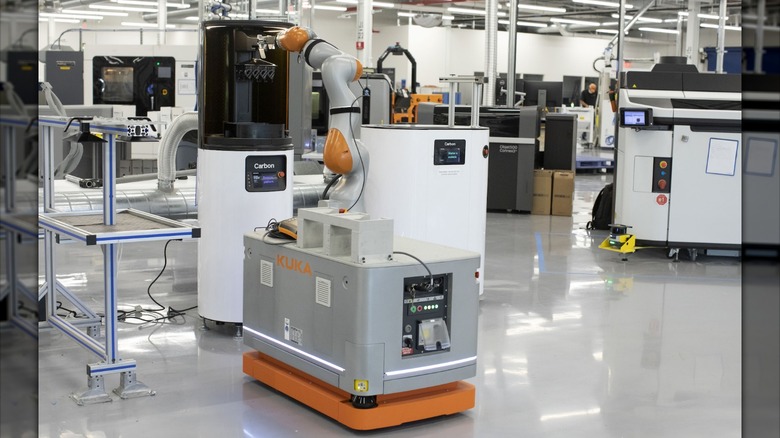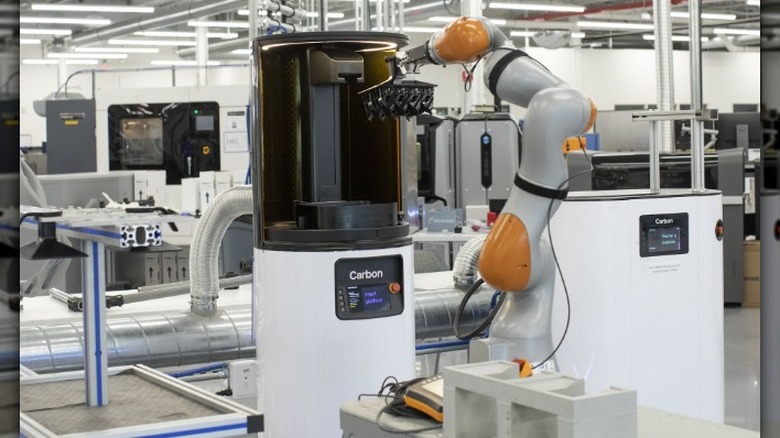Ford Trained A Roving Robot To Run Its 3D Printers
Robots and automation are already part of the manufacturing process for a lot of companies, and today Ford is introducing a robot that it uses in its own facility. Named Javier, this robot is responsible for Ford's 3D printing, and it's to the point where Javier can mostly handle the printing autonomously — even when no humans are around to watch it. Indeed, the company says Javier mostly spends its day doing nothing but 3D printing, only taking a "short break" to recharge the batteries. If Javier were self-aware, that would be downright dystopian.
What's impressive about this robot is not just the fact that it spends its days and nights manning Ford's 3D printer, but also that it's capable of movement — meaning it doesn't have to be fixed to just one spot in order to do its task. Also impressive is the fact that Javier can communicate with Ford's 3D printer, something that isn't necessarily as easy to pull off as it sounds. It seems like Javier is an impressive proof-of-concept for Ford in more ways than one.
Ford taps Javier to 3D print low-volume car parts
Ford describes Javier as an "innovative robot on wheels" built by German manufacturer KUKA. Though the company's announcement today was rather light on specific details, Ford does say that through Javier's feedback, the company has been able to fine-tune accuracy to cut back on errors. Though Javier is a mobile autonomous robot, it doesn't use camera vision to see. Rather, Ford says that it created new processes related to positioning and that it has filed patents for those.
That's not the only new technology Ford developed in making Javier its resident 3D printer. The company also said that it has created an application interface that allows the robot to communicate with the printer so it can know when jobs are done and queue up new objects to be printed. Normally, Ford says that Javier and the printer wouldn't be able to communicate with one another since they come from different suppliers (the printer, as you can see in the images, is made by Carbon), but with this interface it has developed, the two machines are able to "talk" to each other. Ford has also filed patents related to those processes and communication interfaces.
Javier works the 3D printer making custom parts when they're needed for niche vehicles. Of course, Javier can't do everything on its own, as Ford says that it still needs human operators to upload designs to the printer and maintain the robot and its printer companion. Those engineers will also be tasked with creating new ways for this technology to be used, and Ford director of global manufacturing technology development Jason Ryska sees a future where these communication techs are applied to the assembly line as well.

